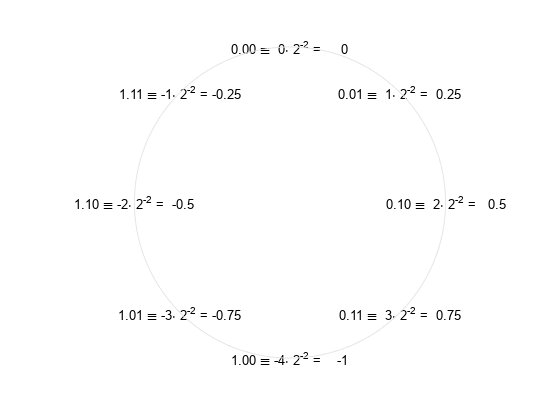Digital Number Representation
Fixed-point and floating-point number representation
In digital hardware, binary numbers are represented as either fixed-point or floating-point data types. Understanding how different data types are defined and represented in hardware can help you to choose data types that are appropriate for your application.
Topics
General
- Physical Quantities and Measurement Scales
Overview of measurement scales and representing numbers. - Benefits of Fixed-Point Hardware
Fixed-point hardware can provide benefits in size and power consumption, memory usage, speed, and cost. - Data Types and Scaling in Digital Hardware
Provides an overview of data types and scaling in digital hardware. - Supported Data Types
Data types supported for simulation and code generation.
Fixed-Point
- Fixed-Point Data Types
Fixed-point data types representation. - Quantization
A weighted sum of bits represents the quantization of a real-world value. - Fixed-Point Numbers in Simulink
Fixed-point data type and scaling notation used in Simulink®. - numerictype of Fixed-Point Objects
Fields and settings for thenumerictypeobject. - Fixed-Point Versus Built-in Integer Types
Differences between fixed-point data types and built-in integer data types in MATLAB®. - Fraction Lengths and Fixed-Point Numbers
Definitions for negative fraction length and fraction length greater than word length.
Floating-Point
- Floating-Point Numbers
Representation and manipulation of floating-point numbers. - Scaled Doubles
Hybrids between floating-point and fixed-point numbers, which are stored by Fixed-Point Designer™ as doubles.

